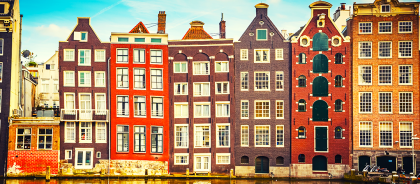How to get there
Getting to Amsterdam is the easiest thing in the world. Schiphol Airport is one of Europe’s largest aviation hubs, receiving more flights per day than anywhere else. Dutch airline KLM often runs sales to its destinations, including Amsterdam.
You can get from Schiphol Airport to Amsterdam by train, descending at the terminus, Amsterdam Centraal. It takes around 17 minutes, and a ticket costs €4.30.
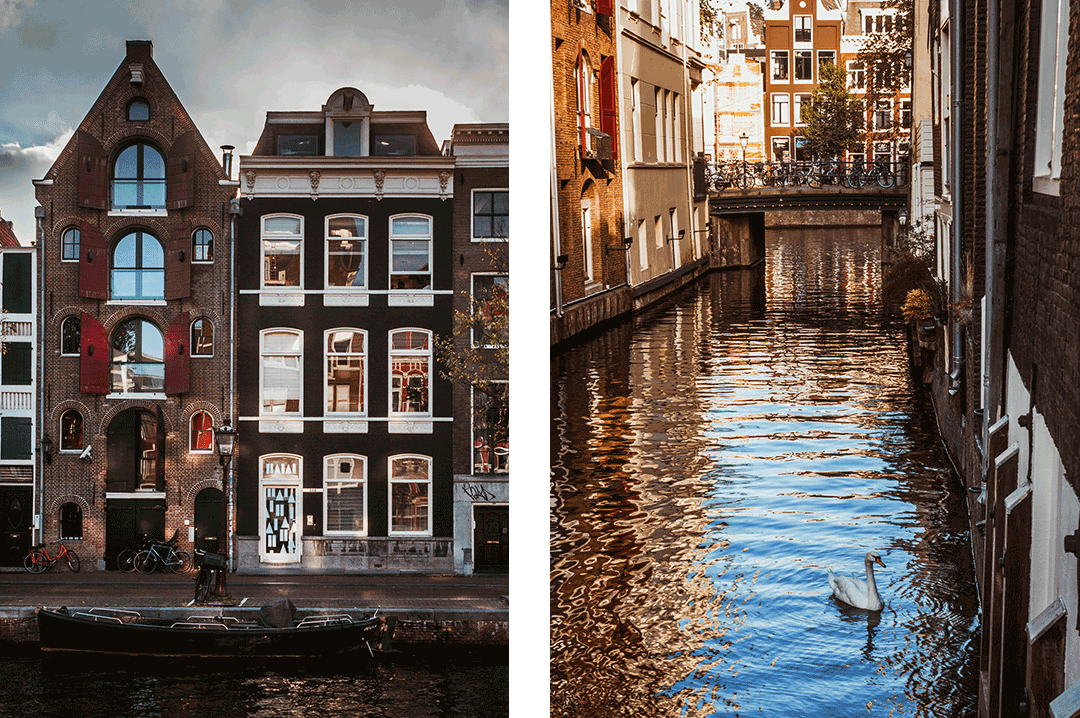
If you’re flying from within Europe or are seeking a cheaper option, you can fly to the airport in the city of Eindhoven, and you can get there for €10-20 on WizzAir or Ryanair. From that airport, take bus numbers 400 or 401, and for €3 you’ll travel to the city train station from where you can get to Amsterdam in less than 90 minutes for €19.50.
You can check the timetable for the train and other public transport on the site 9292.nl. Note they also have a convenient app: enter any Dutch address, and you will get a precise route split by the minute.
How to save on transport
You can buy the OV-chipkaart transport card, which allows you to use Amsterdam public transport at discounted prices. It costs €7.50 and can be bought from any ticket machine at subway or railway stations.
How it works: you put money on the card in the ticket machines, at the stops or the stations; as you get on or off the vehicle, you swipe the card at the ticket barrier. The cost of the journey depends on its duration.
If you’re only planning to spend a few days in the city, there is no point in buying the card. However, if you are thinking of staying for longer, you can save by buying it. Note that the card is valid for five years, so you can always come back and use it again.
The best time to go
It’s best to go to Holland in spring or summer. For example, in March Keukenhof — the royal tulip park located in the town of Lisse between Amsterdam and The Hague — opens for just two months. The entire park is a massive celebration of spring and color, but expect a crowd of tourists. The ticket will set you back €18.
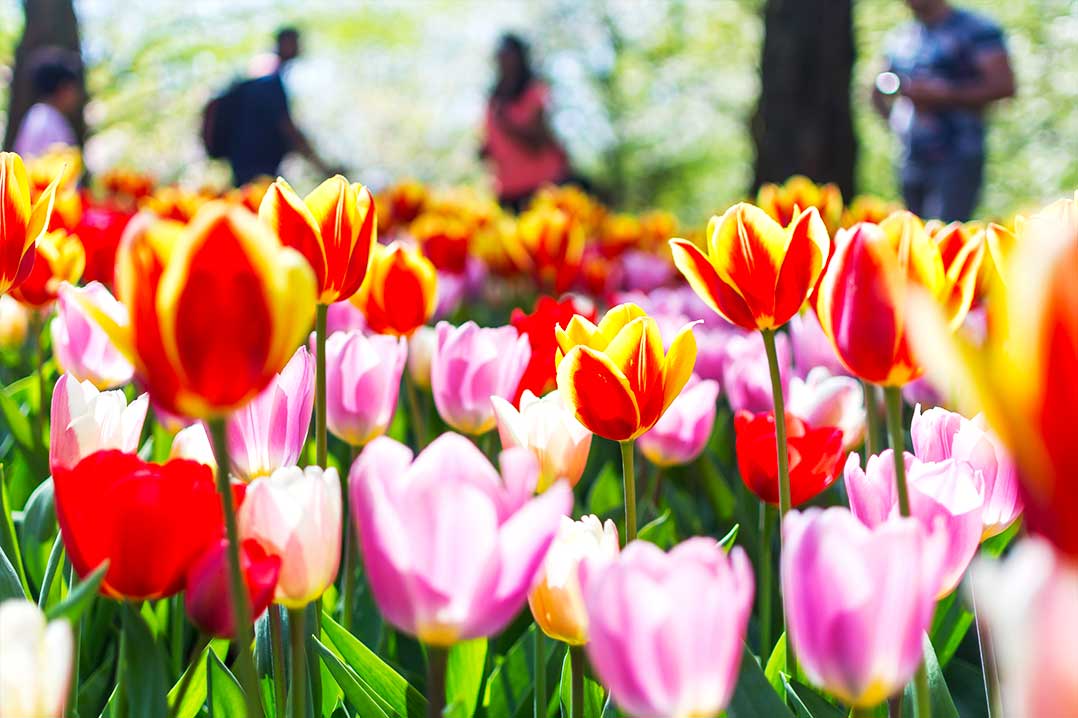
Always remember that Amsterdam can be a stubborn soul — nasty weather can break out in any season, and a grey and white sheet instead of a sky is standard for Holland. My nearly three years in the country taught me to value sunny days more than anything else.
Where to stay
Let’s run through the city’s main districts so that we can determine which is the best fit for you.
Centrum — Binnenstad
The name speaks for itself: you will live in the very center, near the station, Dam Square, the main tourist streets (such as Kalverstraat) and the canals. Cafes, bars, and shops — all the best places are nearby, and that is the main advantage. The disadvantages are that you will meet fewer locals here and there are fewer supermarkets if you need them, while you can be sure to encounter crowds of tourists at most times. That said, you can always go and hide in a quiet lane somewhere.
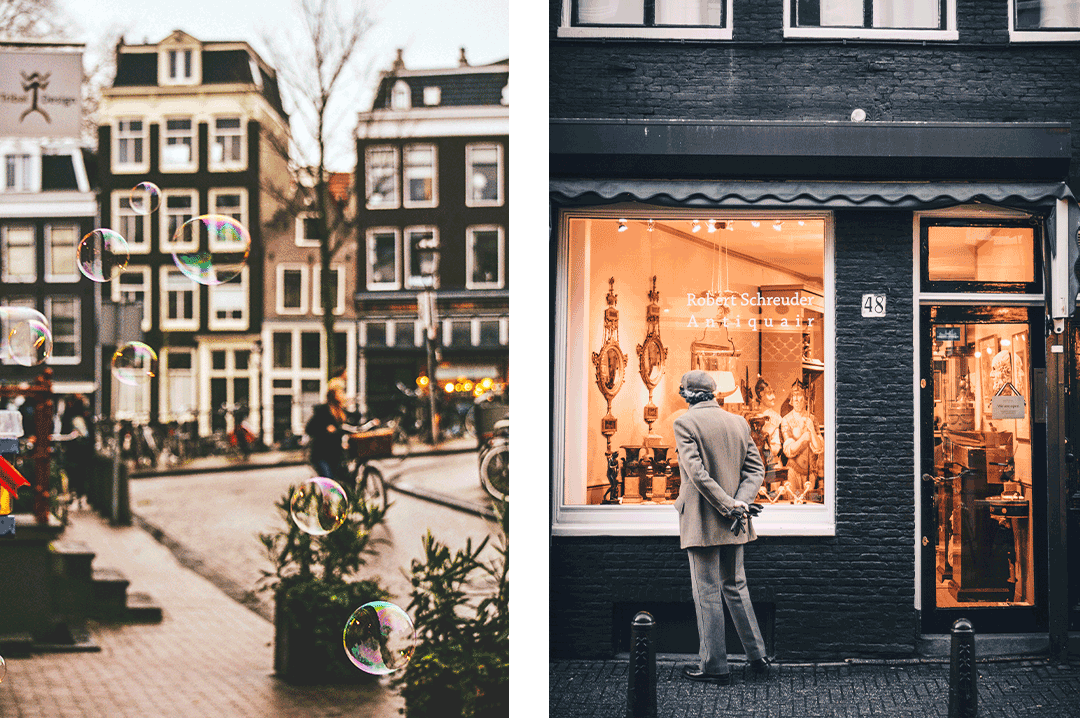
Oddly enough, I advise staying in the red light district, which is actually one of the oldest districts of the city and with a rich history. To find this district, use the Oude Kerk as a pointer.
Jordaan
If you want to live in a quiet place near the main station, consider the Jordaan quarter. It’s slightly to the west but is still considered part of the central district. It contains a concentration of comfortable apartments and hotels along peaceful Amsterdam canals.
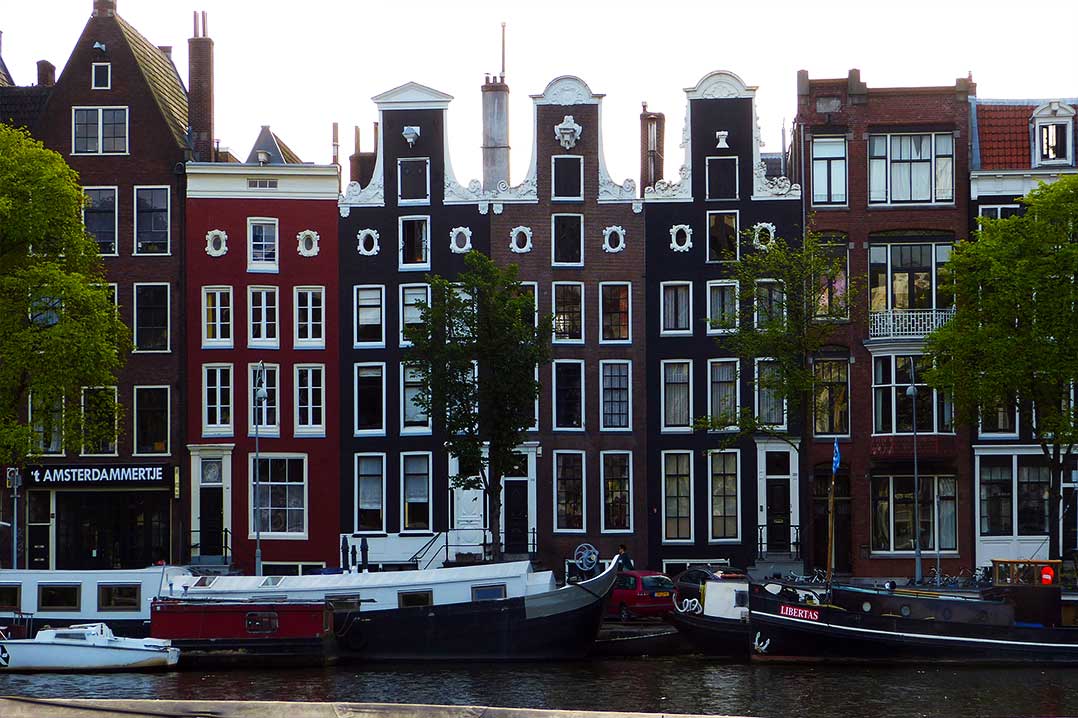
The Canal District
The southern part of the central district is often referred to as the canal district. Here it is always beautiful, it has quiet lanes and, of course, the canals and other sights are within walking distance. Again, though, there are loads of tourists around.
Zuid
One of the most well-to-do parts with a great quality of life is the southern district. The locals often split it into even smaller quarters, of which I recommend two — the museum quarter and De Pijp.
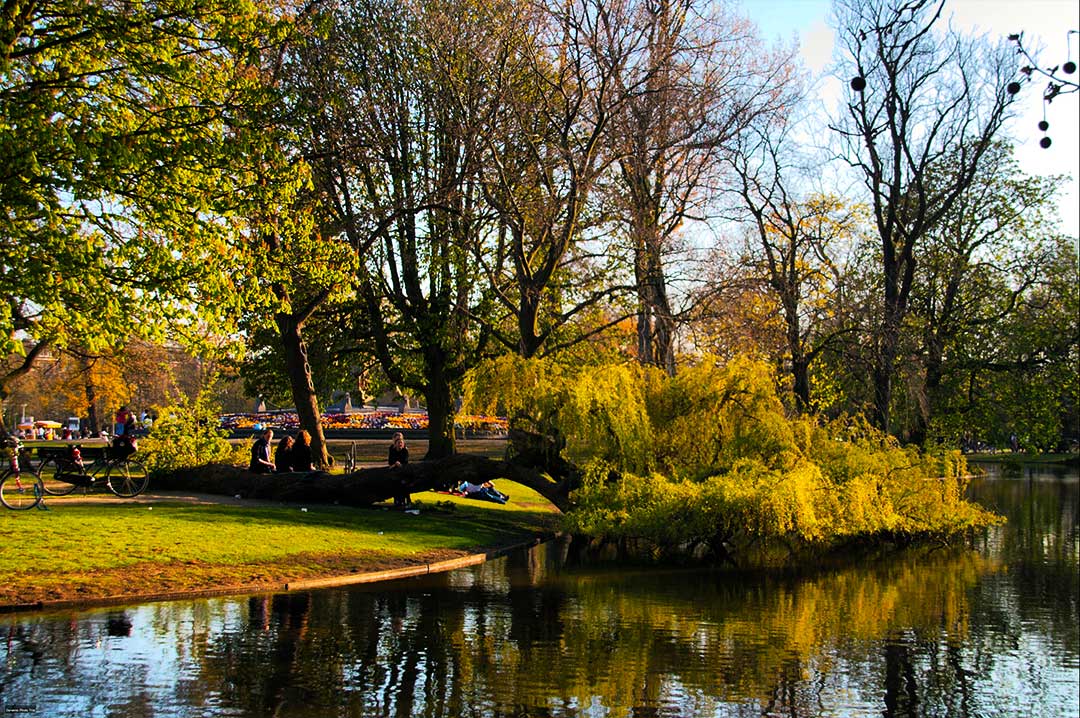
Vondelpark. Photo: Patrick Down/Flickr
The museum quarter
Almost the very center, but quieter and more inspiring. It’s a rich district with an unhurried way of life, next to Vondelpark and the city’s main museums that mustn’t be missed.
De Pijp
If you want to be at one with Amsterdam, gain an inside view of how the locals live and see the city through their eyes, I recommend De Pijp — the most fashionable district of the city. Like all the top districts of major capitals, De Pijp was once a host to the working class, whereas now it is bursting with stylish coffee houses, bars, and restaurants. It is also famous for its market, Albert Cuyp Markt.
How to save money in Amsterdam
Amsterdam is certainly not cheap. A tourist can save money with the I amsterdam card. It gives you free transport within the city’s borders, tickets to museums (for example, Rijksmuseum, the Van Gogh Museum, and the NEMO science museum), and a boat cruise on the canals. Moreover, it gives you discounts in cafes, restaurants, and shops. At the same time, it will give you a great city map, which is an added benefit. There are several card types: for 24, 48, 72, 96 and 120 hours. A 24-hour I amsterdam card costs €59.
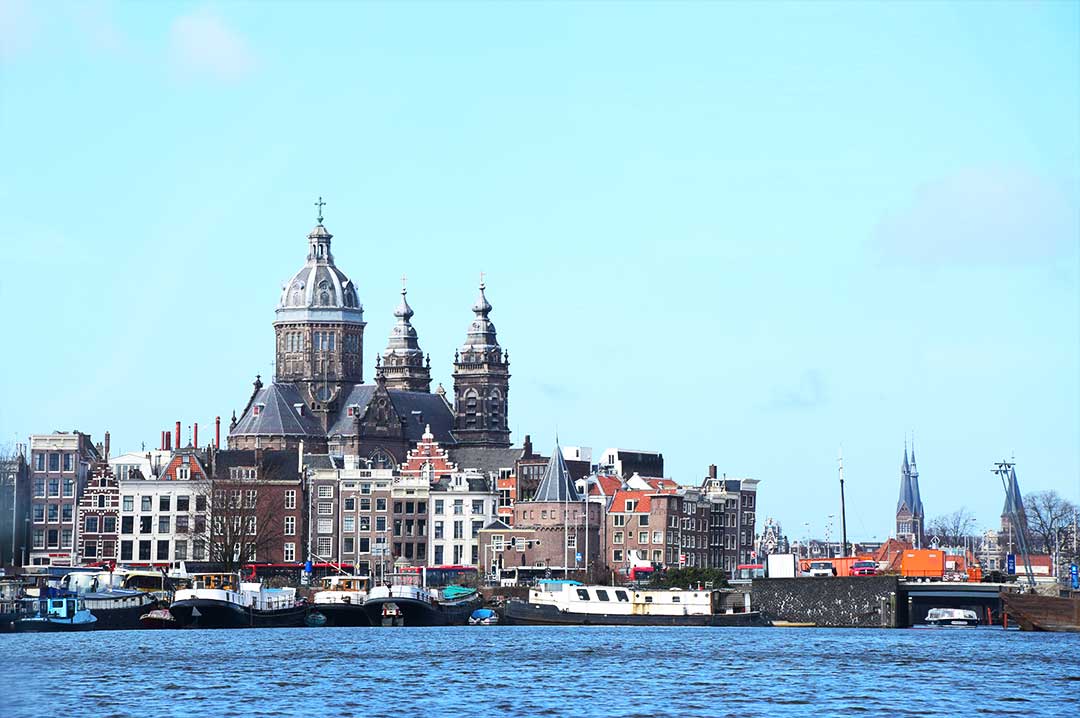
Day one. The city center and southern part
On the first day, you will see Amsterdam’s best-known places and tourist sights, and get to know the city’s history and heroes, which the local museums will tell you all about.
You should begin with the very center — I suggest heading for Dam Square. Once, this square was nothing more than a dam, built in the 13th century on the northern part of the Amstel River (that is how the name Amsterdam arose: a dam on the Amstel River). On the square, you will see the Royal Palace of Amsterdam, National Monument, and Nieuwe Kerk.
From here you can walk to Oude Kerk, which is surrounded by the red light district. Despite the temptations of the attractive red neon windows, don’t forget to take a look at the church too. It’s the oldest building in Amsterdam, built at the beginning of the 13th century by the Catholic rulers and then confiscated by the Calvinists during the Reformation. Today, it’s a Protestant church that is used from time to time to exhibit contemporary art.
About the canals
Wherever you go in Amsterdam, water will be nearby. The city center is surrounded by four canals from the 17th century that have been included on the UNESCO list. At the time, they were built to improve the transport system and support local businessmen. Now, though, they are the city’s main tourist attraction.
One of the most interesting and popular museums among tourists is Anne Frank House. This is a hidden apartment on the Prinsengracht canal where Anne and her family lived in secret during the Nazi occupation in World War Two. You access the apartment through a secret door hidden behind a moveable wardrobe. The museum hosts both permanent and temporary exhibits telling the story of the life of this Jewish little girl and her family, especially her letters. An adult ticket costs €10, but if you’re under 17, it costs €5.
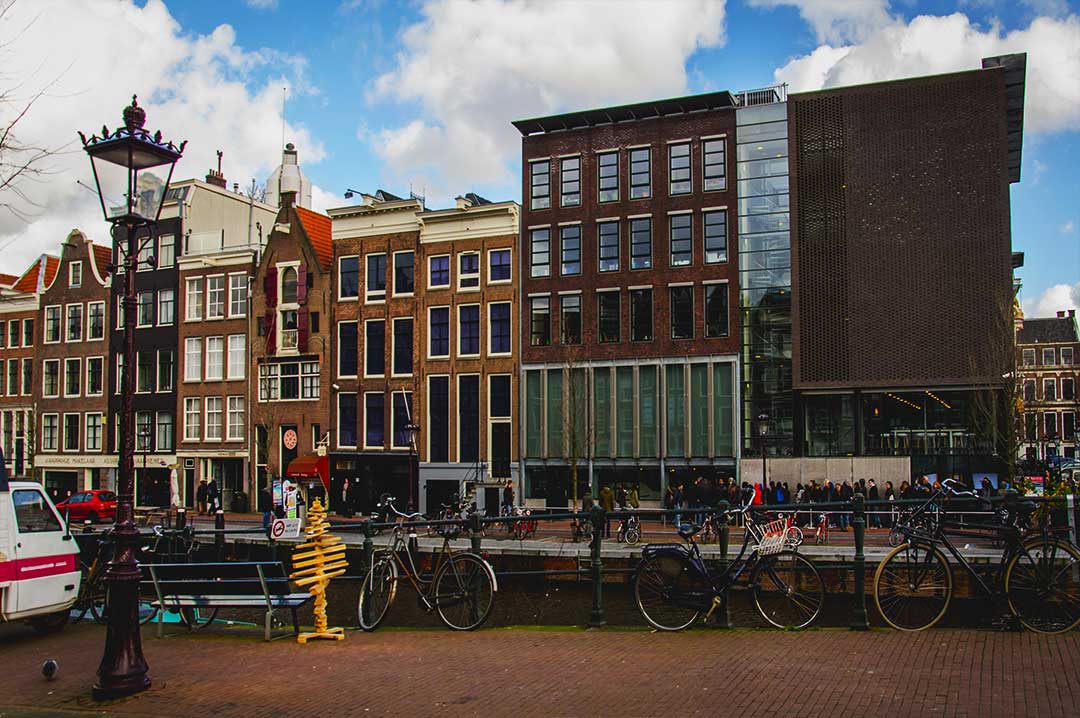
Begijnhof. You enter here through a door off Spui Square. Before the Reformation, this quiet enclosure belonged to a Catholic monastery. It was built in the 14th century as a place to stay for female Catholics who weren’t nuns but who led a righteous life and were engaged in charity. Later the state took control, but the chapel now belongs to an English-speaking Protestant congregation. This enclosure also contains one of Amsterdam’s oldest wooden buildings, constructed in the 14th century.
On that same Spui Square, you can find an English-language bookshop called The American Book Center. Be careful – once you’ve gone in you’ll find it hard to leave quickly. You’ll always find a couple of books here that you cannot leave without, or if you’re unable to make up your mind, then you can make a “blindfold” choice: select one of the books wrapped in parchment by reading the brief description on paper. Each section of the shop has books like that available.
After that, pass all the shops on the tourist street Leidsestraat in the direction of Vondelpark — the most famous park in the city. Rich locals decided at the end of the 19th century to upgrade the swampy part of the city by turning it into a private park. Visitors had to pay to enter the territory, which at the time was called New Park. Later, the townspeople renamed it Vondelpark in honor of the statue of the Dutch poet that met guests in the very center.
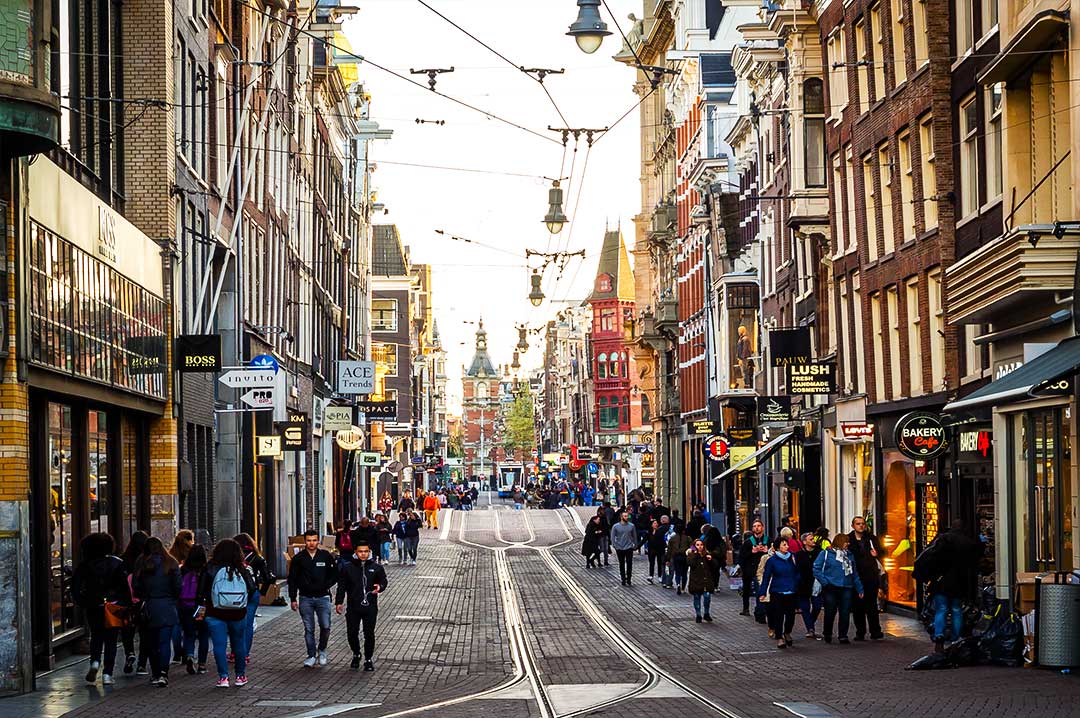
By the mid-20th century, the owners had come to realize that maintaining the park was beyond their means, and so they gifted it to the city government. There is a lovely tea-room here called ‘t Blauwe Theehuis with large glass windows. Try the traditional Dutch mint tea consisting of a clump of fresh mint, boiling water and a spoonful of honey, and sit on the veranda to enjoy Amsterdam’s unhurried lifestyle.
From the park, go and watch the sunset over Museum Square. If it’s Friday then go to the Van Gogh Museum: it will stay open until 21:00 instead of the usual 17:00. It’s worth renting an audio guide at the museum, as it will help you to learn more about the life of the Dutch painter. An entry ticket costs €19. Also, take a look in Stedelijk — the city’s museum of contemporary art. It’s open until 18:00, and on Fridays until 22:00. Don’t forget to come back on another day to Rijksmuseum which is next to it (a ticket costs €17.50) in order to view Rembrandt’s Night Watch and other works of great Dutchmen — Vermeer, van Eyck, and Bruegel.
Day two. De Pijp, museums and the north of the city
On the second day, I recommend avoiding the tourists and main sights and instead of going in search of the real Amsterdam. You will visit those districts and places teaming with local life and, I hope, you will get to love the city even more.
In the morning, you should have breakfast in the district of De Pijp and walk around there. Take in the most famous market in Amsterdam, Albert Cuyp. Wonderful fruit and vegetables are sold here, as well as clothes, including works by local designers, and sometimes unique knick-knacks such as garlic-crushers or lemon squeezers. Basically, you will always find something interesting here.
Where to eat breakfast
I recommend Little Collins: brunches from €8-16, and you must try the pancakes with figs or waffles with Hollandaise sauce. You can eat wonderful home-made granola at Bakers & Roasters for €8.50 and pancakes for €7.50. Also, try cappuccino at the famous coffee house the Scandinavian Embassy (a cup will cost €3.20). If you want something really unusual, order the home-made coffee and cherry kombucha for €4.50.
After that, set off for the north of the city. If you’re interested in science, visit the NEMO museum (a ticket costs €16.50) — one of the most famous science museums in the world. You can touch, test, check and study all of the exhibits.
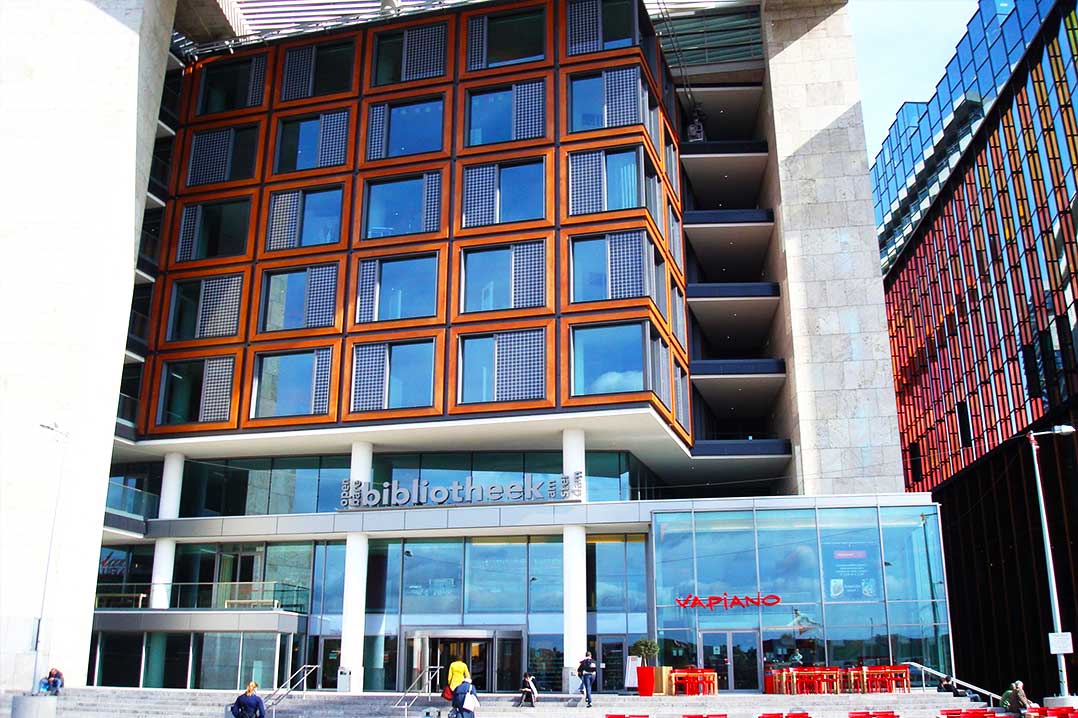
Near the museum, you will find the city library, which is considered the largest in Europe. This eight-story building contains a theater for 270 people, a radio station, exhibition hall, museum and cafe. Its ecology is the object of particular focus: in 2008 the library was recognized as the least harmful building to the environment. The top floor sports one of the most attractive observation points for viewing the city. Entry is free.
After that, head to the train station and walk to the back, where you will find a small port for free ferries that take you to the other side of the IJ waters.
The one on the right takes you to the museum of cinema EYE Filmmuseum. There you will find exhibitions on great directors and filmmaking. The museum has its own cinema hall, where it shows films from the archives as well as contemporary ones.
I also suggest heading to NDSM — this is where the wharf used to be and young artists spend their time here. The free ferry takes around 25 minutes to get here. The artists hire studios in huge warehouse premises, while large-scale music festivals are arranged on open squares around. Once per month, the complex hosts the largest flea market in Europe. You can find anything there: old books and magazines, paintings, badges, statuettes, clothes and posters. Entry costs around €5, but believe me, this is a priceless spectacle. See the website for the next dates when the market will be held.

After you return to the station, you can walk to the western park which is located on the grounds of yet another former factory (Westergasfabriek & Westerpark). Built at the end of the 19th century, the “gas factory” is today the center of gravity for young people in Amsterdam. Here you will find restaurants, musical platforms, an arthouse cinema, and the largest center of arcade machines in the city!
Amsterdam is a city of canals and, of course, it’s pleasant to witness it from the water. Therefore, if the sun hasn’t yet set, take a trip on the pancake boat. The cruise is much more pleasant when combined with eating great food. So the pancake boat allows you to combine the two: a boat where you can eat as many pancakes as you want during the cruise. 75 minutes of happiness for just €17.50 per person.
What to eat
National cuisine
If you want an authentic Dutch lunch or supper, head to Moeders restaurant. The establishment is famous for its traditional dishes and promises real home cooking. I recommend stamppot (mashed potato with spinach served with sausages and meatballs), there is also a veggie version, and it costs €16. Also try the fresh fish and homemade meatballs often known here as bitterballen.
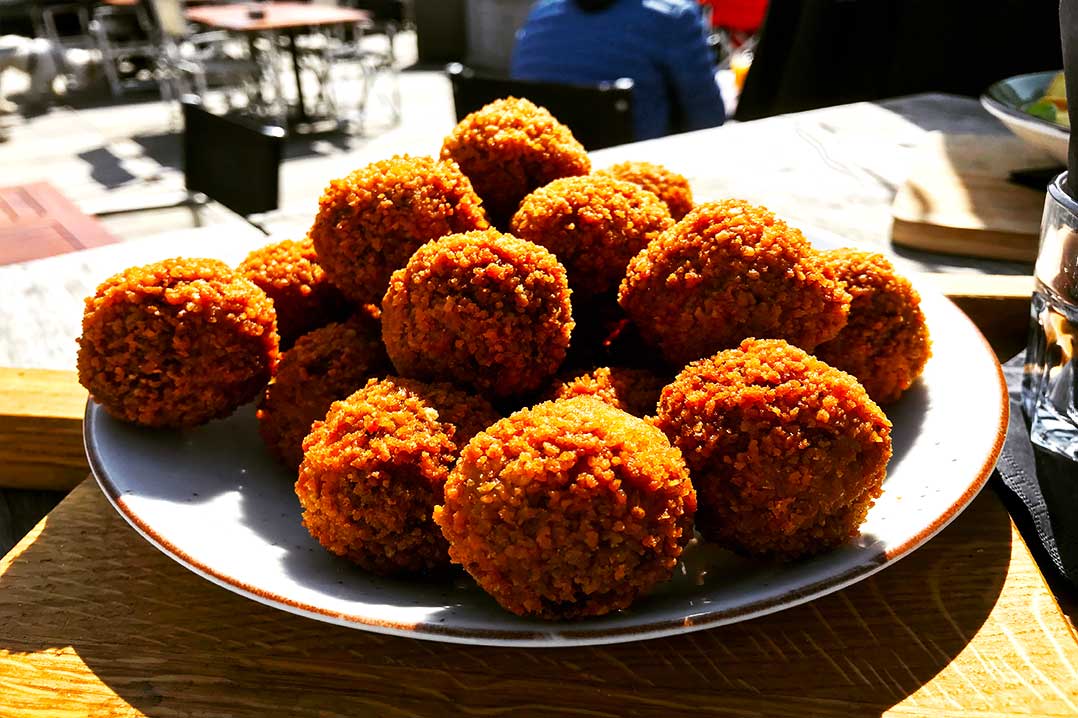
Real Dutch apple pie
For Dutch apple pie, head for Winkel 43. The locals bake it with a lot of cinnamon, and they add raisins and nuts. They serve it warm after first asking whether you want to add whipped cream. Say “yes” to everything. A piece of pie will cost €7.
French fries on the street
You will find these easily enough, as small mobile vendors are everywhere. The fries in the bag are sliced into big pieces and generously covered in mayonnaise. The taste is irresistible. A standard portion will cost around €2.50, and they will ask another 50 cents for the sauce.
Herring
You can also try this from the mobile stalls. My favorite is usually to be found on Spui Square. You can eat it like a local, holding it by the tail and eating it whole. A light version is the herring-dog: the herring it placed in a roll with pickled cucumber and onion. Even if you don’t like herring give this fish dish a chance. This snack will cost €2-3.
Stroopwafels
Dark caramel-brown waffles — you have to try these whatever. You can eat them at Lanskroon or at the Original Stroopwafels stall at the Albert Cuyp market. One waffle will cost €2.50.
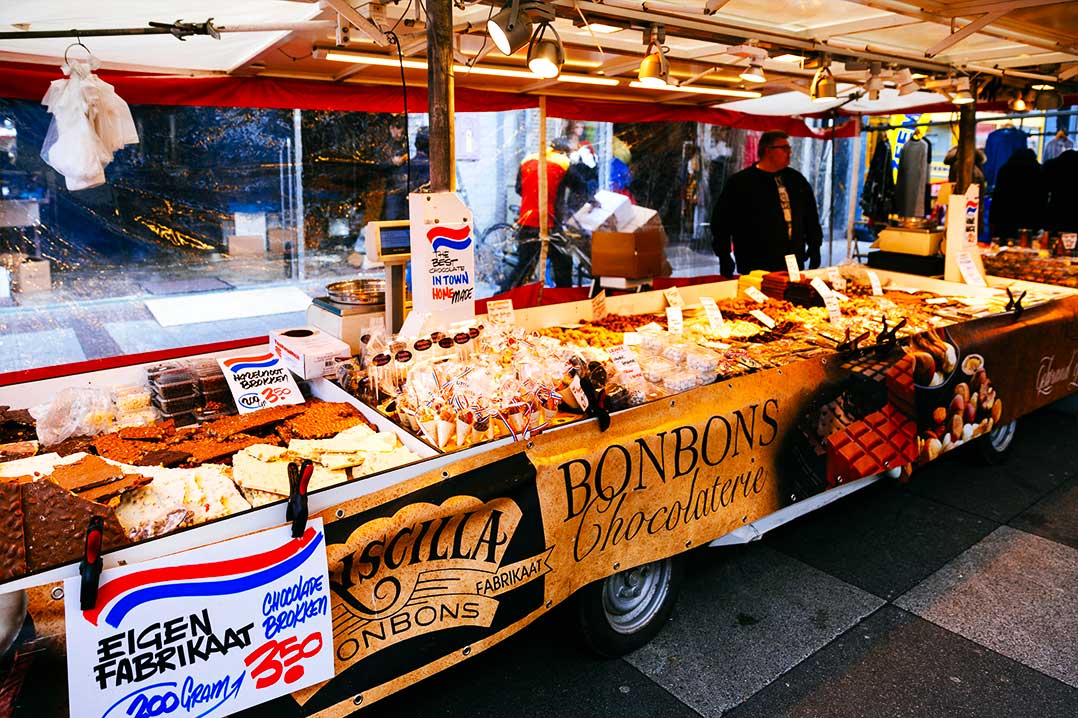
An evening program
Head to the bar Oldenhof for cocktails. A quaint wooden setting, unique house cocktails, and a great selection of beer and spirits. Many locals consider this to be the best cocktail bar in the city.
Another famous cocktail bar is Hiding in Plain Sight with the same quaint atmosphere that even seeps into the menu, which is written in the format of an old short story. If you like spicier drinks, try the sharp Spanish Inquisition, or if you want something stronger then order Cohiba Lancero, but if you want a softer taste in your mouth then order a Cranberry Spritz.
If it’s beer you prefer, head to Café de Spuyt, which is near Museum Square. The establishment is famous for its large selection of beers. I recommend dark Palm, light Leffe or Kriek — traditional Belgian beer with cherry juice. A glass will cost €4.
The bar Proeflokaal Arendsnest sells only Dutch beer. You must try the local tripel, and just in case, write down the name of your hotel on a piece of paper — as tripel is high-strength. A glass will cost around €5.
Amsterdam is a cozy, modern and vivid city containing an unusual culture. Arty young people from across the world descend on it each year, making it cozier, more vivid and more interesting every day. You will find the real Amsterdam in the factories transformed into hang-outs and in little coffee houses by the canals. Plus of course the red light district — it’s plain to see, yet nobody seems to talk about the spirit of the city itself. Except perhaps about its tolerance of all walks of human activity.

